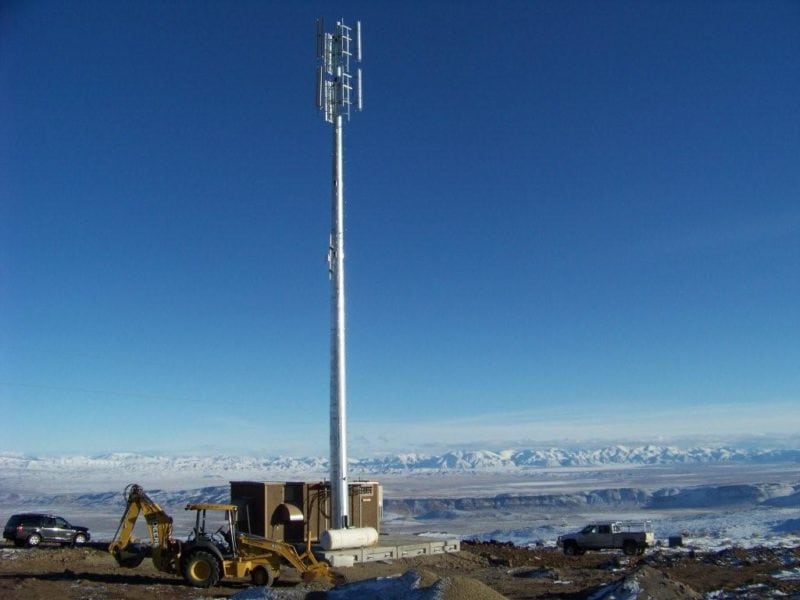 A Gogo ATG tower. Photo: Gogo
A Gogo ATG tower. Photo: Gogo
Gogo CEO Michael Small confirmed the in-flight connectivity provider’s plans to launch a next-generation air-to-ground (ATG) network in 2018, during Gogo’s 2016 earnings call Monday. Although Small provided little details about the company’s plans for upgrading its existing ATG technology, his confirmation shows Gogo is not abandoning ATG for satellite-based IFC just yet.
Gogo first announced plans for a next-generation ground-based network in September 2016. It noted that the new network would use unlicensed spectrum, a proprietary modem and a new beam-forming antenna. The existing Gogo ATG network features 250 cellular towers, but with limited bandwidth, the service has struggled to provide adequate service for even low intensity cabin-based IFC applications like email.
But with the use of the new unlicensed spectrum, and the upgraded aircraft modem and antenna, Gogo is promising speeds of 100 megabits per second, which would then be broken down in terms of connection speeds based on passenger use, device type and other individual user factors. If this becomes a reality, the new ATG network would deliver speeds about 10 times as fast as Gogo’s existing ATG system.
The network is planned for a 2018 launch. “We are now engineering our solutions to achieve speeds in excess of 100 megabits per second and with 99% availability,” said Small. “This is true for both our next-generation air-to-ground and our global satellite solutions. We expect these figures to continue to improve.”
Aircraft equipped with older versions of Gogo’s air-to-ground technologies will need new modems and blade antennas to use the new service. Norman Smagley, Gogo’s CFO, said in the first quarter of 2017 that the company would invest up to $9 million in development spending around the launch of the new ATG network.
When Gogo first announced plans to launch 2Ku in 2014, it signaled a shift in the company’s strategy, moving away from the use of ATG technology to deliver in-flight connectivity to the use of Ku-band satellites. Last year, Gogo signed capacity agreements with Intelsat and SES for use of their high-throughput and wide-beamed satellites, three of which have launched, with another four planned this year.
One of Gogo’s biggest competitors in next-generation ATG will be SmartSky Networks, which is already holding discussions with airlines about its 4G ATG network. SmartSky plans to launch its U.S.-based ATG network by mid-2017, using the unlicensed 2.4 GHz spectrum band.
Despite the leap in capability provided by 2Ku over Gogo’s existing commercial aviation ATG network, the company still does see demand in ATG. In 2016, Gogo installed or upgraded approximately 1,100 commercial airplanes and 700 business jets.
John Wade, EVP and COO for Gogo says another key focus for the company in 2017 is expanding the rate at which its equipment is installed by airframe original equipment manufacturers such as Airbus and Boeing.
“About 2,000 new aircraft are delivered annually by the major OEMs, which represents significant opportunity for us,” said Wade. “Today, 200 of our existing 1,500 2Ku aircraft awards will be installed by OEMs. By the end of this year, we will have both Boeing B787 and Airbus A350 aircraft installed by the OEM.”